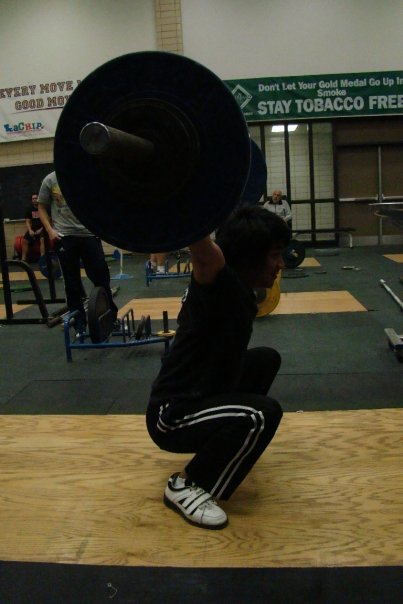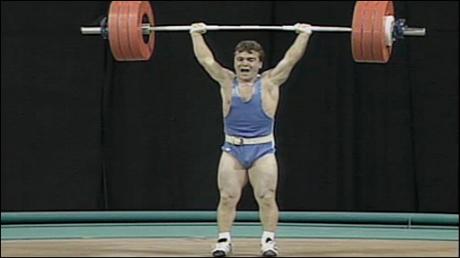The winner of our “Rock the Vote” blog post, we’re going to discuss the best ways to integrate Olympic lifts into your training program. What I’m actually going to do is spread this out over numerous blog posts, as it’s a pretty expansive topic.
DISCLAIMER: I’m not a world-class Olympic lifting coach. I’ve spent a lot of hours coaching lifters and working to improve their performance, but this isn’t meant to become the be-all, end-all O-lift resource. Rather, this is geared towards the average guy or gal who wants to start utilizing the lifts in their program.
The first set of posts is going to cover developing the flexibility/mobility necessary to do some of the basics correctly: Hold the bar in the front squat position, improve t-spine and hip mobility in the squat, etc.
Please don’t try the lifts without first developing a certain degree of mobility/flexibility. I have these horrible visions of a huge, inflexible bodybuilder going out and trying to full snatch for the first time after reading this blog post, so please don’t be that guy!

He has great mobility – you probably don’t!
Olympic lifters are some of the most mobile athletes in the world. Even from a joint-by-joint perspective, these guys fit the bill, as everyone at a high level possess amazing mobility through the ankles, hips, thoracic spine and gleno-humeral joint.
(Note: If you need to figure out exactly where you need more mobility, be sure to check out Assess and Correct.)
A Primer on Mobility
When chatting with former Olympic lifter and good friend Geoff Neupert a while back, he stated that he developed his mobility by working on it every single day. In your case, if you really want to get serious about the lifts, you’ll need to get serious about your mobility work as well.
Let’s start by examining the ankle joint, and how you can start to improve mobility there.
Ankle Mobility
A large degree of dorsiflexion is necessary to squat deep, so that’s where we’ll start our journey. Average dorsiflexion is approximately 20 degrees, although Aaron (an O-lifter we trained at IFAST for a year or so) actually had closer to 35 degrees of dorsiflexion!

Aaron Cunanan – Deep squatter extraordinaire
From a foam rolling/soft tissue perspective, start by using a lacrosse ball or foam roller to loosen up the gastroc, soleus, and peroneals. Improving tissue quality should result in an immediate improvement in dorsiflexion range of motion.
From there, it’s time to actually groove dorsiflexion mobility. The wall ankle mobilization is a great place to start:
Many have a tendency to perform this exercise incorrectly, so follow these cues to improve performance:
- Weight on the heel and outside of the foot.
- Drive the knee forward, or slightly outside the foot (do not go inside!)
- Don’t make it a goal to max out mobility on Day 1. Start to groove proper technique in this exercise, and focus on keeping the weight on the heel/outside of the foot.
When performing this exercise, you’ll probably not a discrepancy between sides, especially if you have a history of ankle sprains. Work on getting things symmetrical first and foremost, and then work on improving total capacity.
Lastly, you can always just throw on a pair of O-lifting shoes and grealy reduce ankle mobility needs and influences!
In Part II of this series, we’ll discuss hip mobility and how we can start getting the necessary range of motion to catch those big cleans and snatches!
Stay strong
MR

